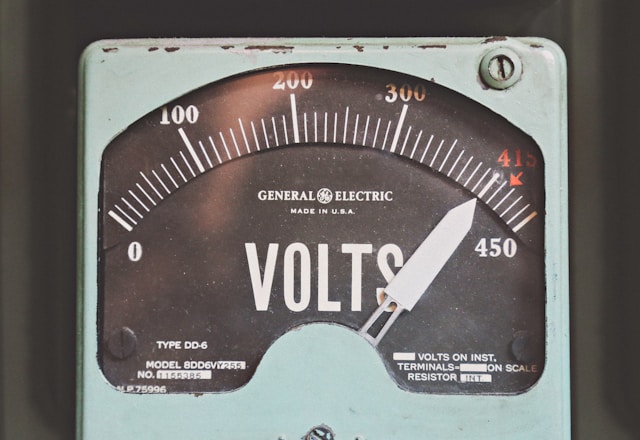In Oakbrook, IL, enhancing energy efficiency can significantly increase property value and reduce utility costs. Given the competitive housing market in Oakbrook, making your home more energy-efficient is a wise investment. By implementing a few strategic changes, you can lower your energy consumption and create a more comfortable living environment. This article offers ten practical tips to help Oakbrook residents reduce their home’s energy use and boost overall efficiency.
1. Upgrade to Energy-Efficient Appliances
One of the simplest ways to reduce energy consumption is to upgrade to energy-efficient appliances. Look for the ENERGY STAR label when purchasing new refrigerators, washing machines, dishwashers, and other household devices. These appliances are designed to use less energy without sacrificing performance. Additionally, consider replacing old, inefficient appliances with newer models that offer advanced energy-saving features. While the initial investment might be higher, the long-term savings on your energy bills make it worthwhile. Plus, reducing energy consumption contributes to a smaller carbon footprint, benefiting the environment.
2. Improve Your Home’s Insulation
Proper insulation is crucial for maintaining a consistent indoor temperature and reducing energy consumption. Inadequate insulation allows heat to escape during the winter and enter during the summer, forcing your HVAC system to work harder. Insulate your attic, walls, and floors to minimize energy loss. Additionally, consider upgrading your windows to double-pane or energy-efficient models to further enhance insulation. For roofing concerns, reputable Oakbrook roofers can provide expert advice and services to ensure your roof is adequately insulated. Improving insulation not only saves energy but also increases the comfort of your home.
3. Seal Gaps and Cracks
Air leaks around windows, doors, and other openings can significantly increase your energy consumption. Sealing gaps and cracks prevents drafts and maintains a stable indoor temperature. Use weatherstripping around doors and windows to create a tight seal. Caulk any visible gaps or cracks in your home’s exterior and interior walls. Pay special attention to areas where plumbing, electrical wiring, and ductwork enter your home. Sealing these gaps reduces the workload on your heating and cooling systems, leading to lower energy bills and a more comfortable living environment.
4. Use a Programmable Thermostat
A programmable thermostat allows you to control your home’s temperature settings based on your schedule, reducing energy usage when you’re not home. Set the thermostat to lower the temperature in winter and raise it in summer during hours when the house is empty. You can also program it to adjust the temperature at night while you sleep. Some advanced models can be controlled remotely via smartphone apps, providing flexibility and convenience. By optimizing your heating and cooling schedules, a programmable thermostat can significantly reduce energy consumption and save you money on utility bills.
5. Install Energy-Efficient Lighting
Switching to energy-efficient lighting is a simple yet effective way to reduce energy consumption. Replace traditional incandescent bulbs with LED or CFL bulbs, which use up to 75% less energy and last significantly longer. Consider installing dimmer switches to control the brightness of your lights and save energy. Additionally, take advantage of natural light by keeping curtains and blinds open during the day. Using energy-efficient lighting not only reduces your electricity usage but also enhances the ambiance of your home. Make a habit of turning off lights when they’re not in use to further conserve energy.
6. Maintain Your HVAC System
Regular maintenance of your HVAC system ensures it operates efficiently and reduces energy consumption. Change air filters every one to three months to improve airflow and system performance. Schedule annual professional inspections to identify and fix any issues before they become major problems. Cleaning the ducts, coils, and fans can also enhance the efficiency of your system. Consider upgrading to a high-efficiency HVAC unit if your current system is outdated. An efficiently running HVAC system not only lowers energy usage but also improves indoor air quality and overall comfort.
7. Utilize Ceiling Fans
Ceiling fans can help reduce your reliance on heating and cooling systems by circulating air effectively. In the summer, set the fan to rotate counterclockwise to create a cooling breeze. In the winter, reverse the direction to clockwise to push warm air down from the ceiling. Using ceiling fans allows you to adjust your thermostat by a few degrees, reducing energy consumption without sacrificing comfort. Ensure that your ceiling fans are energy-efficient models to maximize savings. Incorporating ceiling fans into your home’s climate control strategy can significantly lower energy bills.
8. Embrace Solar Energy
Harnessing solar energy is a sustainable way to reduce your home’s energy consumption. Installing solar panels on your roof can provide a significant portion of your household’s electricity needs, reducing reliance on traditional energy sources. Solar water heaters are another option to consider, as they use solar energy to heat your home’s water supply. While the initial installation costs can be high, government incentives and long-term savings on energy bills make it a worthwhile investment. Embracing solar energy not only lowers your utility costs but also contributes to a greener environment.
9. Optimize Water Heating
Water heating accounts for a large portion of home energy consumption. To reduce this, consider lowering the temperature on your water heater to 120 degrees Fahrenheit. Insulate the water heater and hot water pipes to retain heat and reduce energy loss. Upgrading to a tankless water heater can also be more efficient, as it heats water on demand rather than maintaining a large tank of hot water. Additionally, practice energy-saving habits such as taking shorter showers and using cold water for laundry whenever possible. Optimizing your water heating practices can lead to substantial energy savings.
10. Adopt Energy-Efficient Habits
Incorporating energy-efficient habits into your daily routine can make a significant difference in reducing your home’s energy consumption. Simple actions such as turning off lights when not in use, unplugging electronics, and using power strips to manage multiple devices can add up to considerable savings. Wash full loads of laundry and dishes to maximize the efficiency of your appliances. During colder months, wear layers to stay warm instead of cranking up the heat. Being mindful of your energy usage and making small changes in your habits can contribute to a more energy-efficient home.
Conclusion
Reducing your home’s energy consumption involves a combination of upgrading to efficient systems, making structural improvements, and adopting energy-saving habits. By implementing these ten tips, you can significantly lower your energy bills, increase the comfort of your home, and contribute to environmental sustainability. From upgrading appliances and sealing gaps to embracing solar energy and optimizing water heating, each step plays a crucial role in creating a more energy-efficient home. Start making these changes today to enjoy the benefits of a greener, more cost-effective living space.





